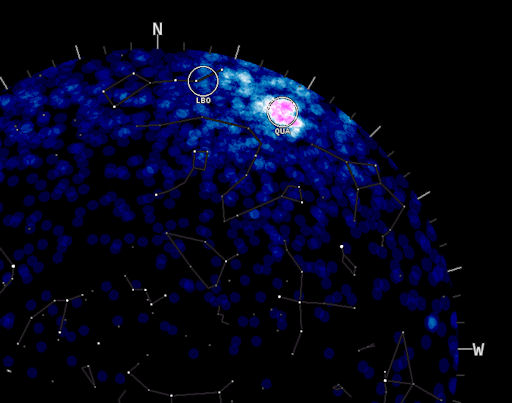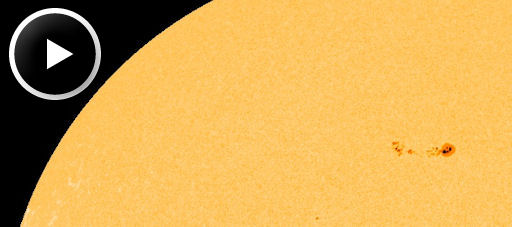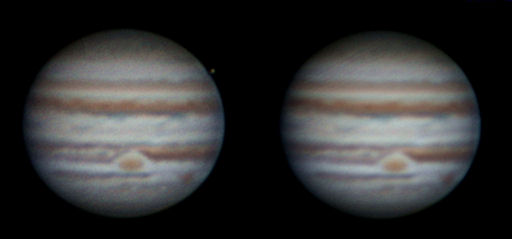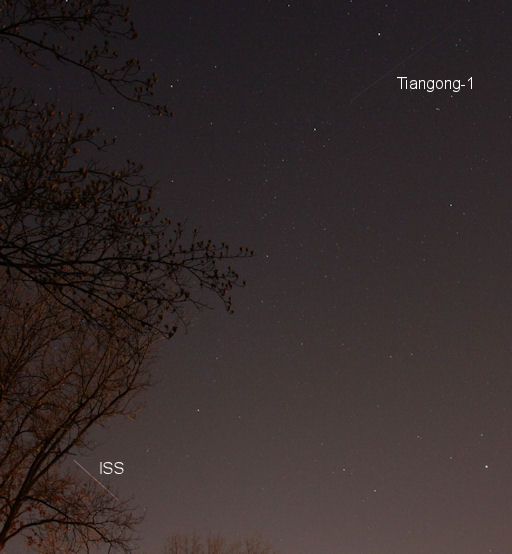They came from outer space--and you can have one! Genuine meteorites are now on sale in the Space Weather Store. | | |
FIRST METEOR SHOWER OF 2013: Earth is about to pass through a stream of debris from 2003 EH1, a comet fragment that produces the annual Quadrantid meteor shower. The shower peaks on Thursday morning, January 3rd, probably during a few-hour period around 5 am PST (1300 UT). At maximum, as many as 100 meteors/hour could emerge from a radiant near Polaris, the north star. Unfortunately, glare from a waning gibbous moon will wash out many Quadrantids, reducing the visibility of the display. Recommendation: Try listening to the live meteor radar, which is unaffected by moonlight.
Update: Prof. Peter Brown of the University of Western Ontario reports that the Canadian Meteor Orbit Radar (CMOR) is already picking up Quadrantid activity. This map of the northern celestial sphere shows many echoes from the Quadrantid radiant:

"The latest CMOR radar update from just an hour ago (based on the last 24 hours of data) shows that the Quadrantids have already been showing strong returns," says Brown. "I expect the radar rate to really pick up in the next day or two."
FAST-GROWING SUNSPOT: Two days ago, northern sunspot AR1640 was barely visible. Now it measures more than 100,000 km from end to end, and it is still growing. This movie recorded by NASA's Solar Dynamics Observatory shows the sunspot's rapid development on Dec. 31-Jan.1st:

The magnetic fields of fast-growing sunspots can become unstable and erupt. So far, however, AR1640 is as quiet as all the other sunspots on the solar disk. Solar activity remains very low even as AR1640 boosts the odds of a significant flare. NOAA forecasters estimate a 10% chance of M-class eruptions during the next 24 hours. Solar flare alerts: text, voice.
Realtime Space Weather Photo Gallery
3D JUPITER: This just in: Jupiter is a sphere. You can prove it to yourself by staring at the stereo pair below and crossing your eyes. The third image that appears in the middle shows the shape of the giant planet in three dimensions.

French photographer Sylvain Weiller took the pictures using a 12-inch telescope on December 30th. Jupiter's rapid rotation provided the two points of view necessary for stereo imaging. "The two pictures are separated by about 10 minutes," explains Weiller. "I processed them using SPM (Stereophoto Maker) to make the 3D-couple." More details are given here.
"The moon in the image is Europa," he adds. "I caught it just a couple of minutes from being eclipsed behind the planet." (PS: Europa looks spherical, too.)
Realtime Jupiter Photo Gallery
DOUBLE SPACE STATION FLYBY: In a short span of 13 seconds on Dec. 29th, amateur astronomer Val Germann watched two space stations fly over his backyard in Columbia, Missouri. The ISS and China's Tiangong-1 space station were almost simultaneously visible to the naked eye:

"I have been waiting for a chance at this combination for some time, finally getting an image this evening," says Germann.
Most readers are familiar with the 450-ton ISS. Fewer, perhaps, know about the 8.5-ton Tiangong-1 (Heavenly Palace-1), China's first space station. It was launched in Sept. 2011 and briefly boarded by taikonauts (Chinese astronauts) in June 2012. The crew included the first Chinese female astronaut, fighter pilot Liu Yang, 33. Another group of taikonauts is scheduled to visit in June 2013 as the Chinese space program continues to practice rendevous and docking procedures. According to some reports, the Tiangong-1 will be de-orbited in late 2013 to make way for more advanced experimental stations, Tiangong-2 and Tiangong-3, in 2014 and 2015. Ultimately, China hopes to place an Mir-class station in orbit by 2020.
See the Tiangong-1 before it goes! Spaceweather's Simple Flybys app turns your smartphone into a field-tested space station tracker. It works for both the ISS and the Tiangong-1.
Realtime Space Weather Photo Gallery
Realtime Aurora Photo Gallery
Realtime Noctilucent Cloud Photo Gallery
[previous years: 2003, 2004, 2005, 2006, 2007, 2008, 2009, 2011]

